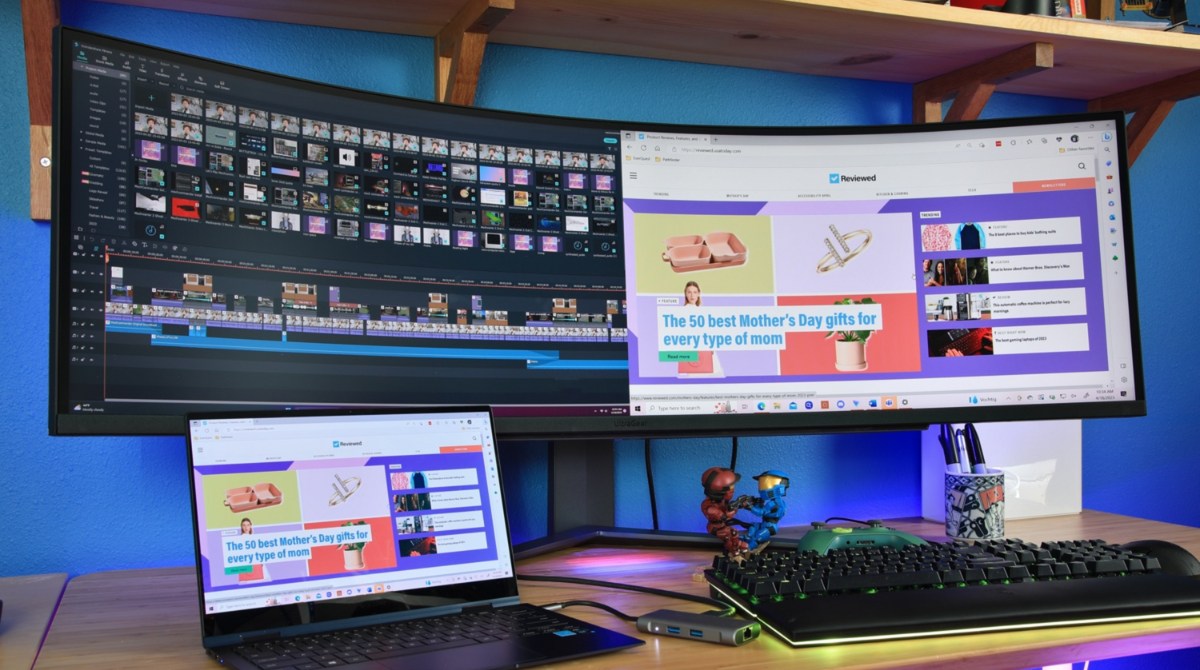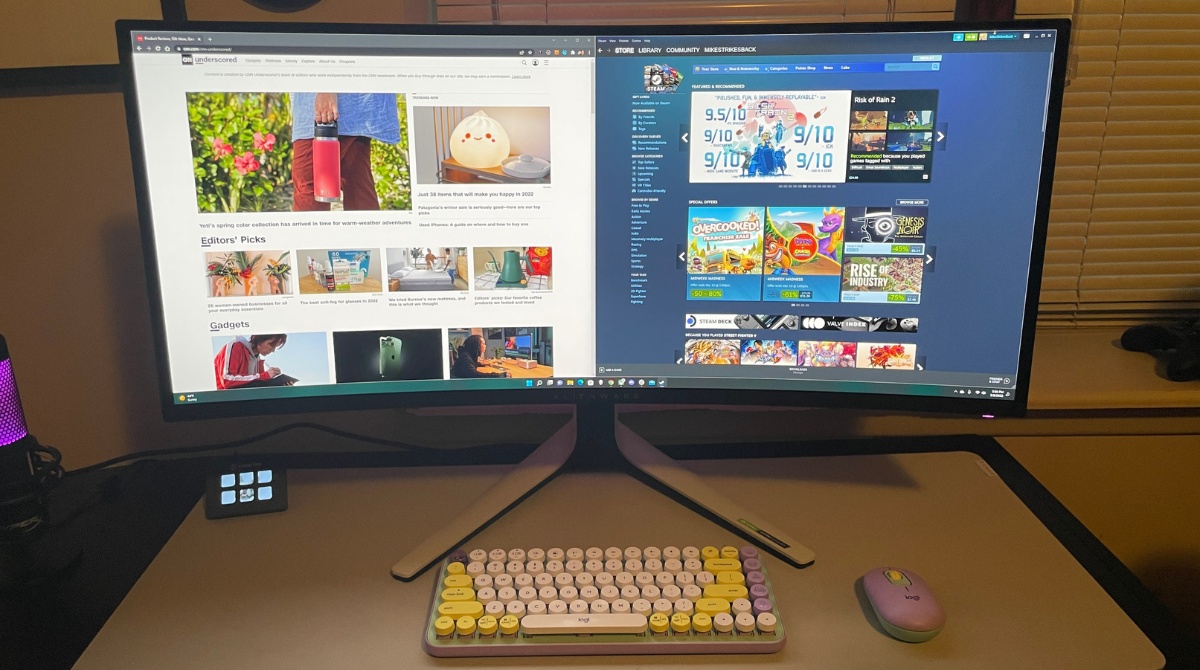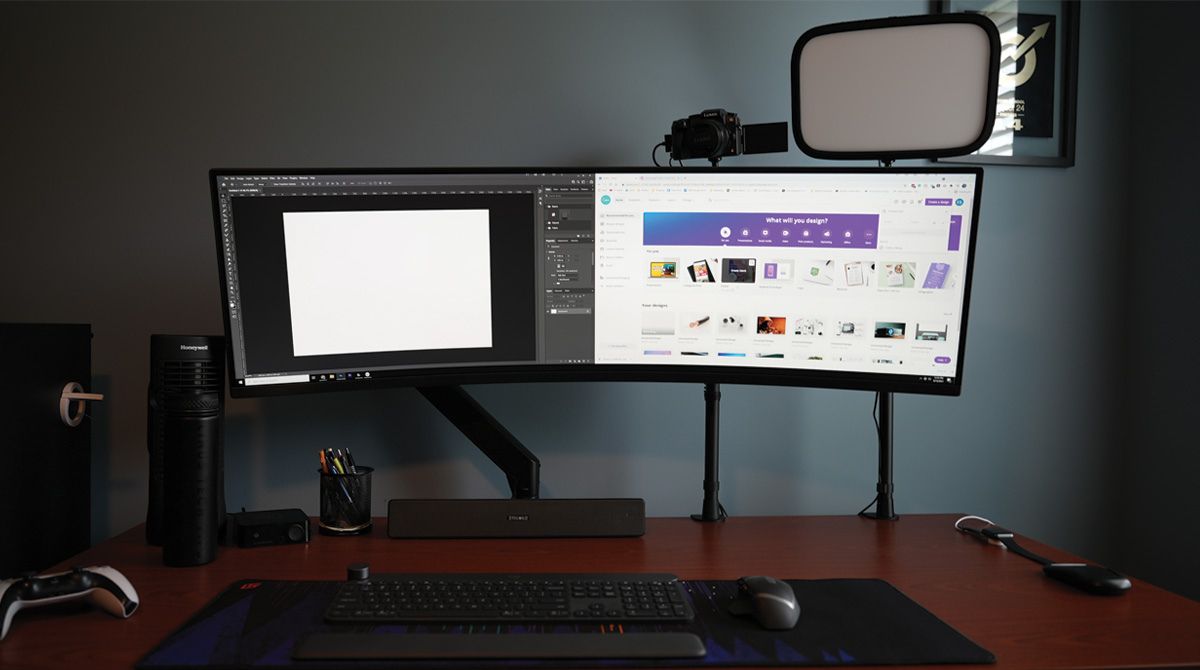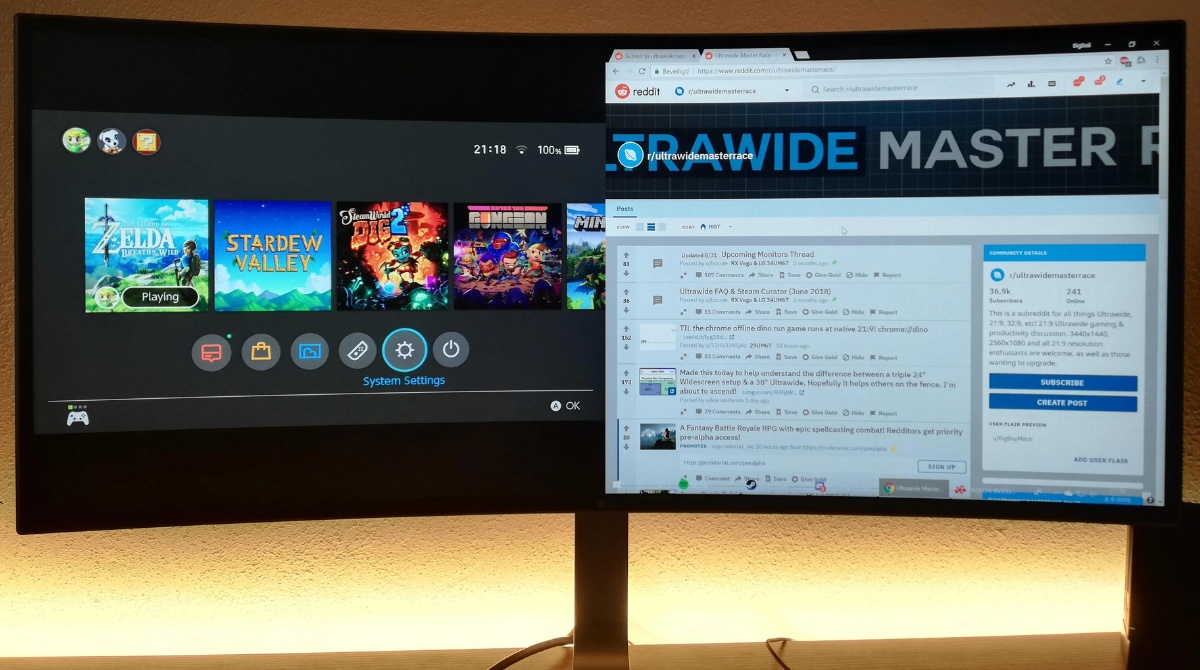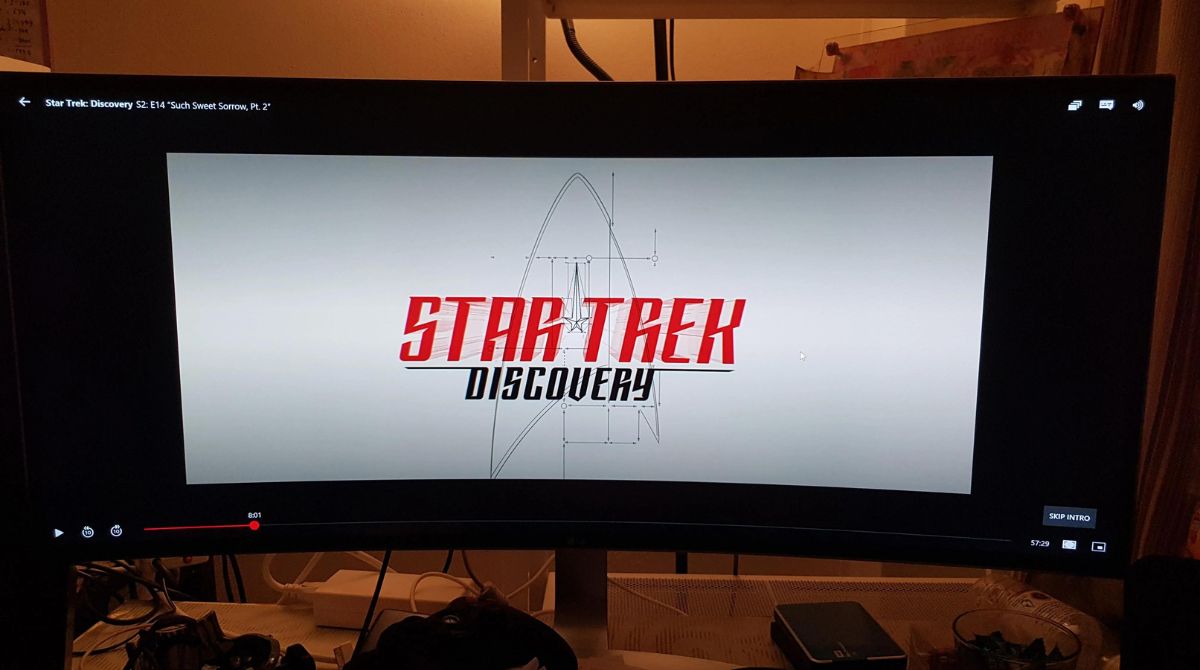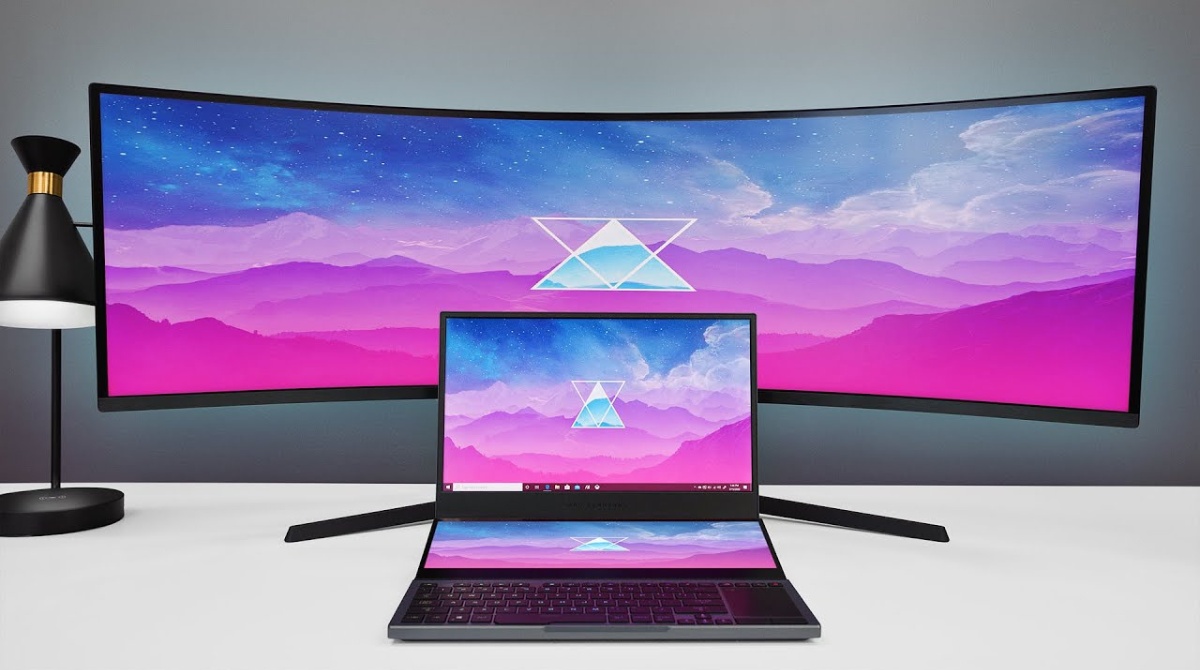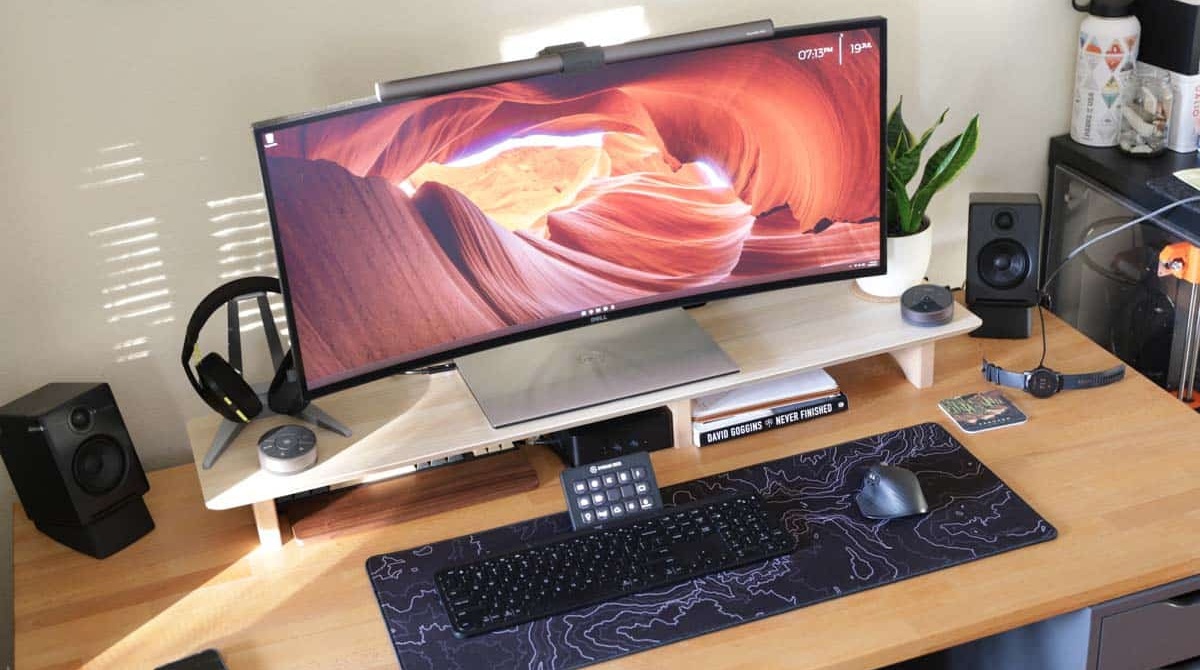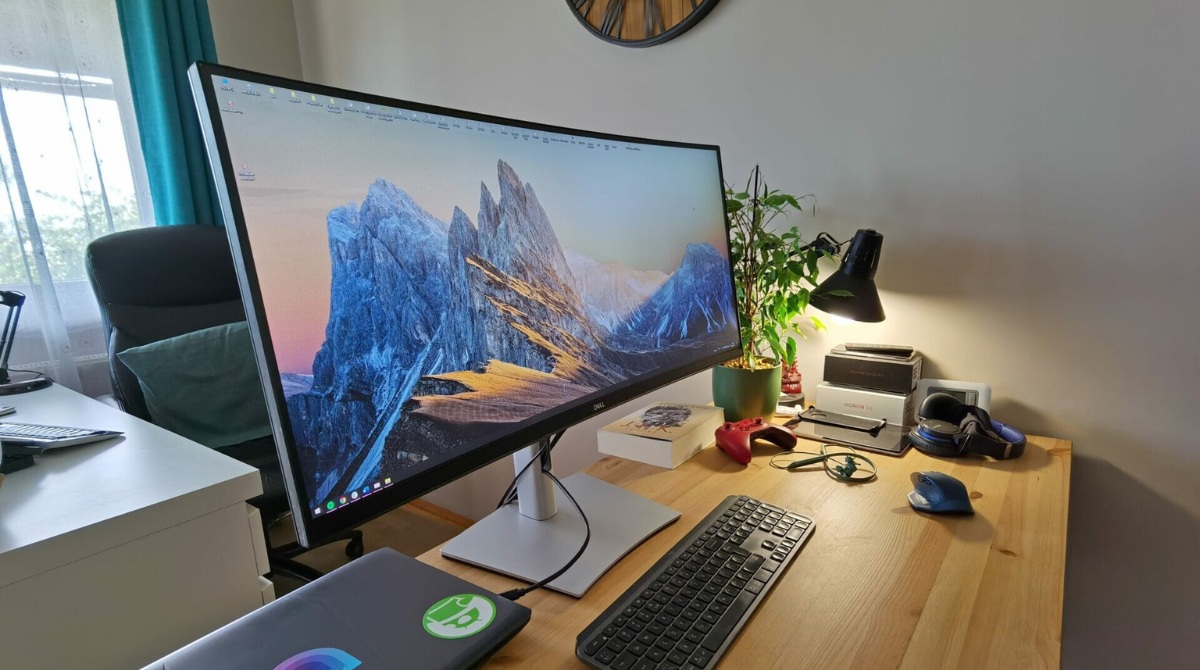Introduction
Welcome to the world of ultrawide monitors! These wide, immersive displays have become increasingly popular among professionals and avid gamers alike. With their expansive screen real estate, ultrawide monitors offer a unique viewing experience that enhances productivity and entertainment.
In this article, we will explore the various methods to split an ultrawide monitor into two, allowing you to multitask effectively and make the most of your display. Whether you need to work on multiple projects simultaneously, compare documents, or simply enjoy a movie while browsing the web, splitting your screen opens up a world of possibilities.
There are multiple software solutions and monitor settings that can help you split your ultrawide monitor, tailoring the screen to your specific needs. We will guide you through these options and provide tips and tricks to maximize productivity with a split screen setup. Additionally, we will address common troubleshooting issues that you may encounter during the process.
Before diving into the methods of splitting the screen, let’s first understand the concept of ultrawide monitors. These monitors typically have an aspect ratio of 21:9, which means the screen is significantly wider compared to traditional 16:9 monitors. This extra width provides a wider field of view, making it ideal for tasks such as video editing, graphic design, and gaming.
Now that we have a basic understanding of ultrawide monitors, let’s explore the different methods to split the screen. Whether you have specific software preferences or prefer to utilize your monitor’s built-in settings, we have you covered. Let’s dive in and discover how to make the most of your ultrawide monitor by splitting it into two!
Understanding Ultrawide Monitors
Ultrawide monitors have become increasingly popular due to their exceptional screen real estate and immersive viewing experience. These monitors typically have an aspect ratio of 21:9, which means they are much wider compared to traditional 16:9 monitors.
With the wider screen, ultrawide monitors provide a broader field of view, allowing users to see more content horizontally. This aspect ratio is particularly advantageous for tasks such as video editing, graphic design, and gaming, where a wider perspective enhances the overall experience.
One of the key benefits of ultrawide monitors is the ability to split the screen, allowing users to work on multiple tasks simultaneously. Whether you need to compare documents side by side, monitor multiple applications at once, or watch a video while browsing the web, splitting the screen on an ultrawide monitor provides a significant productivity boost.
Besides the wider aspect ratio, ultrawide monitors also offer enhanced pixel density, which results in sharper and more detailed visuals. This allows for a more immersive gaming experience and makes editing high-resolution images or videos a breeze.
It’s worth noting that not all ultrawide monitors have the same specifications. Some monitors may have a curved display, which provides a more immersive and panoramic viewing experience. Curved ultrawide monitors can help reduce eye strain by offering a more natural viewing angle, making them popular among those who spend long hours in front of the screen.
When considering an ultrawide monitor, it’s essential to understand your specific needs and use cases. Factors such as screen size, resolution, connectivity options, and ergonomic features should be taken into consideration. By choosing the right ultrawide monitor, you can tailor your setup to your preferences and optimize your workflow.
In the next sections, we will explore various methods to split the screen on an ultrawide monitor. Whether you prefer using software solutions or utilizing the monitor’s built-in settings, we have you covered. Let’s continue and discover how to make the most of your ultrawide monitor by splitting it into two!
Software Solutions for Splitting the Screen
Splitting the screen on an ultrawide monitor can be easily achieved using software solutions specifically designed for this purpose. These software programs enable you to divide your screen into multiple sections, allowing you to view and work on different applications simultaneously.
One popular software solution is DisplayFusion, which offers a range of features designed to enhance multitasking on ultrawide monitors. With DisplayFusion, you can create custom layouts and split your screen into multiple sections with just a few clicks. Additionally, it provides advanced window management options, such as snapping windows to specific areas of the screen and creating virtual monitors.
Another versatile software option is PowerToys FancyZones, developed by Microsoft. FancyZones allows you to create custom grid layouts on your ultrawide monitor, giving you precise control over how you divide the screen. This software is highly customizable, allowing you to create your own layouts or choose from various pre-defined options.
If you’re an avid gamer, you may also benefit from software solutions like DisplayFusion and FancyZones, as they can help you split the screen for multiplayer gaming or simultaneous game and chat windows.
For macOS users, there are also software solutions available. Magnet, for example, enables you to easily snap windows to different sections of the screen, allowing for efficient multitasking. Spectacle is another popular option, offering similar functionality with customizable keyboard shortcuts for quick window management.
These software solutions provide a user-friendly interface and give you the flexibility to customize your screen layout according to your specific needs. They are particularly beneficial for users who require precise control and want to create complex screen configurations.
It’s important to note that while software solutions can offer extensive customization options, they may require a one-time purchase or a subscription fee. However, the enhanced productivity and convenience they provide often outweigh the associated costs.
Now that we’ve explored software solutions for splitting the screen, let’s move on to the next section, where we will discuss how to split the screen using the monitor’s built-in settings. Stay tuned!
Splitting the Screen using Monitor Settings
In addition to software solutions, many ultrawide monitors come with built-in settings that allow you to split the screen without the need for additional software. These settings provide a convenient and accessible way to divide your screen into multiple sections to enhance multitasking.
One common feature found in ultrawide monitors is Picture-by-Picture (PBP) mode. PBP mode enables you to split the screen into different sections, each displaying content from a different source or input. This feature is especially useful if you have multiple devices connected to your monitor, such as a computer and a gaming console. PBP mode allows you to view and control each source independently, without the need for a separate software solution.
Another popular feature is Picture-in-Picture (PiP) mode, which allows you to display a smaller window within the main screen, showing content from a secondary source. PiP mode is useful when you want to keep an eye on a specific application or video while working on another task, providing a seamless multitasking experience.
Ultrawide monitors may offer various customization options for their built-in screen splitting capabilities. You can typically adjust the size and position of each section, allowing you to create the desired layout that suits your workflow. These settings can usually be accessed through the monitor’s on-screen menu or with the help of accompanying software provided by the monitor manufacturer.
It’s important to consult your monitor’s user manual or visit the manufacturer’s website for specific instructions on how to access and utilize the screen splitting options. Each monitor model may have different steps and settings available, so it’s essential to familiarize yourself with the specific features offered by your monitor.
Splitting the screen using monitor settings is a seamless and straightforward method that doesn’t require any additional software or installation. It allows you to quickly divide your screen into multiple sections and enhances your multitasking capabilities.
Now that we’ve covered splitting the screen using monitor settings, let’s move on to the next section, where we will explore how to split the screen using third-party apps. Stay tuned!
Splitting the Screen using Third-Party Apps
If your ultrawide monitor doesn’t have built-in screen splitting features or if you require more flexibility and control over your screen layout, third-party apps can be a valuable solution. These apps are specifically designed to enable users to divide their screen into multiple sections with ease.
One popular choice for splitting the screen using third-party apps is Divvy. Divvy offers a simple yet powerful solution for managing window placement and creating custom layouts on your ultrawide monitor. With Divvy, you can easily resize and move windows to different sections of the screen using customizable keyboard shortcuts or a graphical interface.
Another notable third-party app is AquaSnap, which provides a range of window management features, including the ability to split the screen on an ultrawide monitor. AquaSnap allows you to create custom layouts, snap windows to specific areas of the screen with a simple drag-and-drop action, and even supports multi-monitor setups.
If you prefer a more advanced and feature-rich option, MaxTo might be the ideal choice for you. MaxTo allows you to divide your screen into regions and assign specific applications to each section. It also offers advanced features such as the ability to create custom profiles for different workflows and automatic window management based on predefined rules.
Additionally, some software solutions, such as DisplayFusion and FancyZones, which we discussed earlier, can also be categorized as third-party apps. These apps offer more advanced window management features in addition to screen splitting capabilities.
When choosing a third-party app for splitting the screen on your ultrawide monitor, consider your specific requirements and preferences. Some apps may offer more customization options and control, while others may prioritize simplicity and ease of use. It’s also important to consider compatibility with your operating system and any associated costs or licensing requirements.
With the variety of third-party apps available, you can find the solution that best suits your needs and enhances your multitasking capabilities on your ultrawide monitor.
Now that we’ve explored splitting the screen using third-party apps, let’s move on to the next section, where we will provide tips for maximizing productivity with a split screen setup. Keep reading!
Tips for Maximizing Productivity with a Split Screen
Now that you have successfully split your ultrawide monitor into multiple sections, it’s time to optimize your productivity and make the most of your split screen setup. Here are some useful tips to help you maximize your efficiency:
1. Plan your screen layout: Before diving into your tasks, take a moment to plan how you want to arrange your windows on the split screen. Consider the nature of your work and prioritize what needs to be visible in each section. This will ensure a seamless workflow and help you focus on the most important tasks.
2. Utilize keyboard shortcuts: Take advantage of keyboard shortcuts provided by your operating system or software tools to quickly move windows between sections or resize them. These shortcuts can significantly speed up your workflow and make multitasking more efficient.
3. Identify complementary tasks: Consider grouping tasks that complement each other on the same side of the split screen. For example, if you need to reference information from a web browser while working on a document, place them side by side. This will minimize the need to constantly switch between applications.
4. Customize your workspace: Experiment with different screen configurations and layouts to find what works best for you. Adjust the size and position of each section to match your preferences and optimize your workflow. Remember, personalizing your split screen setup is key to maximizing your productivity.
5. Take advantage of virtual desktops: If your operating system supports virtual desktops, consider creating separate desktops for different tasks. This allows you to have even more screen real estate and organize your windows in a more focused manner.
6. Minimize distractions: Avoid cluttering your split screen with unnecessary windows or distractions. Keep only the applications and documents that are relevant to your current tasks visible. This helps maintain focus and improves overall productivity.
7. Experiment and adapt: Don’t be afraid to try different setups and techniques to find what works best for you. Everyone’s workflow and preferences are unique, so explore different options, and make adjustments as needed.
By implementing these tips and tailoring your split screen setup to your specific needs, you can enhance your productivity and make multitasking a breeze on your ultrawide monitor.
Now that we’ve explored tips for maximizing productivity with a split screen setup, let’s move on to the next section, where we will address common troubleshooting issues that you may encounter. Keep reading!
Troubleshooting and Common Issues
While splitting the screen on your ultrawide monitor can greatly enhance productivity, you may occasionally encounter some troubleshooting issues. Here are some common problems and their potential solutions:
1. Incorrect screen resolution: If the split screen appears distorted or does not fit properly on your monitor, check the screen resolution settings on your computer. Ensure that the resolution matches the recommended settings for your ultrawide monitor. Adjusting the resolution to the correct aspect ratio can resolve display issues.
2. Application compatibility: Some software applications may not fully support the split screen feature or may have limitations when used in conjunction with certain screen splitting methods. In such cases, try alternative software or check for updates that may address compatibility issues.
3. Inconsistent window sizes: If you find that windows consistently open at different sizes or positions on your split screen, it may be due to the specific application’s memory of its last window size. Check the application’s settings to see if there is an option to reset or remember window sizes and positions.
4. Uneven brightness or color calibration: Occasionally, the split sections of your screen may have differing brightness or color calibration, resulting in an inconsistent viewing experience. Use your monitor’s built-in settings to adjust brightness, contrast, and color calibration for each split section to ensure consistent visuals.
5. Monitor driver updates: Keeping your monitor drivers up-to-date is crucial for optimal performance. Visit the manufacturer’s website and check for any available driver updates. Installing the latest drivers can resolve compatibility issues and enhance the functionality of your ultrawide monitor’s split screen features.
6. Limited split screen options: Depending on your monitor model, the built-in split screen features may have limitations in terms of the number of sections or customization options available. In such cases, consider exploring third-party software solutions that provide more advanced split screen capabilities and customization options.
7. Hardware limitations: It’s important to note that some older or lower-end ultrawide monitors may have hardware limitations that restrict the ability to split the screen. Ensure that your monitor model supports the desired split screen functionality before attempting to split the screen.
If you encounter any of these issues or other challenges while using the split screen feature on your ultrawide monitor, consult the manufacturer’s support documentation or reach out to their customer support for further assistance.
Now that we’ve addressed common troubleshooting issues, let’s move on to the final section, where we will provide a summary of the key points covered in this article. Keep reading to wrap up our discussion on splitting an ultrawide monitor into two!
Summary
Splitting an ultrawide monitor into two sections can significantly enhance productivity and multitasking capabilities. Whether you choose to utilize software solutions, built-in monitor settings, or third-party apps, there are various methods available to divide your screen and make the most of your ultrawide display.
We started by understanding the concept of ultrawide monitors and their benefits, including the wider aspect ratio, enhanced pixel density, and immersive viewing experience they offer. With this foundation, we explored the software solutions available, such as DisplayFusion, PowerToys FancyZones, and third-party apps like Divvy, AquaSnap, and MaxTo.
Furthermore, we discussed how to utilize the built-in screen splitting features of ultrawide monitors, such as Picture-by-Picture (PBP) and Picture-in-Picture (PiP) modes. These features allow you to divide your screen and view content from multiple sources or inputs simultaneously.
We also offered tips for maximizing productivity with a split screen setup, including planning your screen layout, utilizing keyboard shortcuts, and customizing your workspace. These strategies can help optimize your workflow and make multitasking more efficient.
In addition, we addressed common troubleshooting issues that you may encounter, such as incorrect screen resolution, application compatibility, inconsistent window sizes, and uneven brightness or color calibration. By following the suggested solutions, you can overcome these challenges and enjoy a smoother split screen experience.
Overall, splitting an ultrawide monitor into two sections provides a versatile and customizable solution for efficient multitasking. By taking advantage of the various methods and tips discussed in this article, you can unleash the full potential of your ultrawide monitor and boost your productivity.
Now that you have a comprehensive understanding of how to split an ultrawide monitor into two, it’s time to put these techniques into practice and experience the benefits firsthand. Explore the different methods, experiment with screen configurations, and find the setup that suits your specific needs and preferences.
So, go ahead and dive into the world of split screens on your ultrawide monitor. Enjoy the enhanced productivity, seamless multitasking, and immersive viewing experience that this setup can offer!







